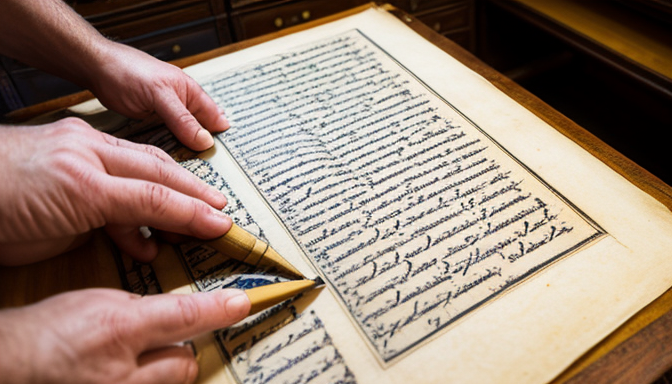Have you ever stumbled upon a dusty old book and felt a rush of curiosity? Rare manuscripts are like hidden treasures waiting to be uncovered, each telling a story that transcends time. These unique artifacts are not just mere pages; they are the whispers of our ancestors, the echoes of civilizations long gone. Imagine holding a piece of history in your hands, a tangible connection to the thoughts and ideas of those who lived centuries before us.
Rare manuscripts offer invaluable insights into historical events, cultures, and philosophies, serving as primary sources that enrich our understanding of human civilization and its evolution over time. They are the keys to unlocking the mysteries of our past. For example, consider the Dead Sea Scrolls, which have provided scholars with profound insights into early religious texts and practices. Each manuscript holds a unique perspective, allowing us to piece together the intricate puzzle of human history.
Preserving rare manuscripts is a meticulous process that involves careful handling, environmental control, and restoration techniques to ensure these treasures endure for future generations to study and appreciate. It’s akin to nurturing a delicate flower; one wrong move can lead to irreversible damage. Experts often utilize climate-controlled environments and specialized materials to protect these invaluable works. The goal is to maintain their integrity while allowing us to marvel at their beauty and significance.
The Historical Significance of Rare Manuscripts
Rare manuscripts are like time capsules, holding within their fragile pages the whispers of our ancestors and the stories that shaped civilizations. These unique artifacts provide invaluable insights into historical events, cultures, and philosophies. Imagine holding a piece of parchment that once passed through the hands of a great thinker or a leader; it’s a connection to the past that is both thrilling and humbling.
These manuscripts serve as primary sources that enrich our understanding of human civilization. They reveal the evolution of language, art, and thought, showcasing how societies have transformed over centuries. For instance, consider the Dead Sea Scrolls—discovered in the mid-20th century, they have reshaped our understanding of early religious texts and the context of biblical history.
Furthermore, rare manuscripts often encapsulate the cultural diversity of their time. They can include everything from ancient medical texts to poetry, providing a window into the daily lives and beliefs of people long gone. The stories told through these manuscripts are not just historical accounts; they are reflections of the human experience, emotions, and aspirations.
In essence, the allure of rare manuscripts lies in their ability to transport us through time. They challenge us to ponder questions like, “What would our world look like without these voices from the past?” By preserving and studying these treasures, we not only honor our history but also ensure that future generations can continue to learn from the rich tapestry of human experience.

The Art of Manuscript Preservation
Preserving rare manuscripts is akin to safeguarding a piece of our collective memory. These delicate documents whisper stories of the past, and it’s our responsibility to ensure they are heard by future generations. The process of preservation is not just about keeping the pages intact; it’s a meticulous art that requires a blend of science, passion, and a deep respect for history. Imagine holding a 500-year-old manuscript in your hands; each crease and stain tells a story of its own. How do we protect such treasures?
The first step in manuscript preservation involves careful handling. Trained conservators wear gloves to prevent oils from their skin from damaging the paper. They often use tools like tweezers to minimize contact, ensuring that the manuscript remains in pristine condition. Furthermore, environmental control plays a critical role. Manuscripts thrive in stable conditions—ideally, they should be kept in a cool, dry place with controlled humidity levels. Too much moisture can lead to mold, while excessive dryness can cause the paper to become brittle.
Moreover, restoration techniques are employed when manuscripts show signs of wear. This might involve repairing tears or fading ink, but it’s essential to use materials that are compatible with the original document. A skilled conservator knows that every intervention must be reversible, allowing future experts to continue the preservation journey. In this way, we not only honor the past but also pave the way for a future where these stories can continue to inspire.
Frequently Asked Questions
- What are rare manuscripts?
Rare manuscripts are unique, hand-written documents that hold significant historical, cultural, or literary value. They can include everything from ancient texts to personal letters and are often considered treasures of our shared heritage.
- Why are rare manuscripts important?
These manuscripts provide us with a window into the past, offering insights into the thoughts, beliefs, and events that shaped our world. They serve as primary sources for researchers and historians, helping us understand the evolution of human civilization.
- How are rare manuscripts preserved?
The preservation of rare manuscripts involves specialized techniques such as climate control, careful handling, and sometimes restoration. Experts work diligently to ensure these precious documents are protected from deterioration, allowing future generations to appreciate them.
- Can I view rare manuscripts in person?
Many libraries and museums house rare manuscripts and offer public access, often through special exhibitions or by appointment. It’s a fantastic opportunity to witness history up close!
- How can I learn more about rare manuscripts?
There are numerous resources available, including online archives, books, and academic journals dedicated to the study of manuscripts. Joining local historical societies or attending workshops can also deepen your understanding.